The Integrative Enneagram Questionnaire draws on the collective body of knowledge and experience from many pioneers in the Enneagram field and as the developers of the iEQ9 we would like to acknowledge the experts, philosophers and practitioners for their contribution to the development and application of the model as we understand it today.Dirk Cloete | Founder Integrative Enneagram Solutions
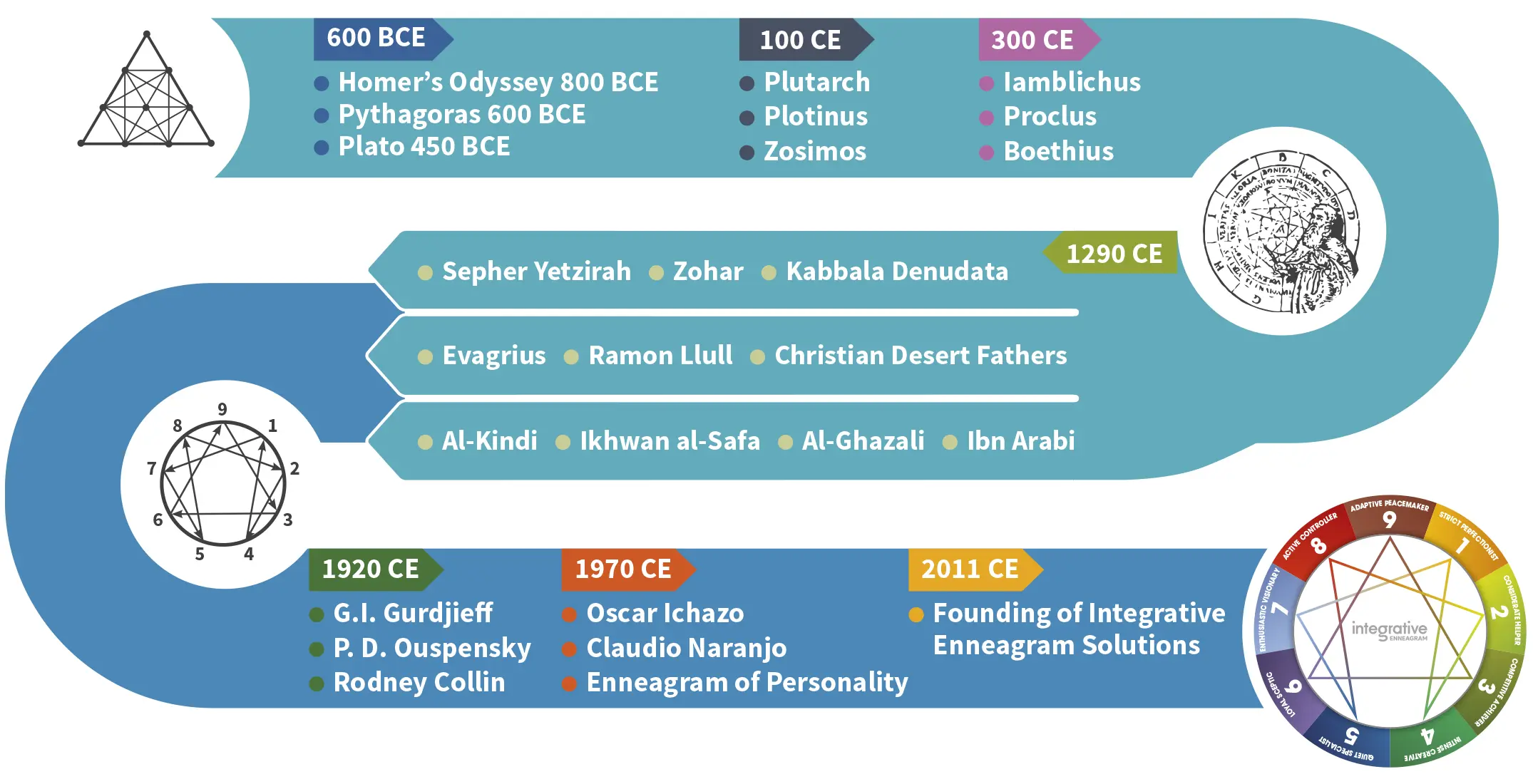
Also known as: Nine Personality Types, Enneagram Type, Nine Types, Personality Type.

Although the exact details of the origin of the Enneagram remain steeped in mystery, all available evidence supports a long and complex history spanning both culture and space - with roots stemming from a variety of different mathematical, philosophical, and spiritual traditions.
The Enneagram framework as it appears in the modern world represents a synthesis of ancient wisdom and cutting-edge psychology. We attempt to honour the many great minds that helped create this powerful and revolutionary tool.
Greek Roots
The term "Enneagram" comes from the Greek words "ennéa" meaning "nine" and
"gramma" meaning "figure".
Ennea -> Nine
Gram -> Model / Points / That which is written or drawn
Some authors claim strong roots in the Sufi tradition. It should be noted, however, that it is definitely not common to all Sufi traditions. Others point to connections to early esoteric Christianity (Evagrius and other desert fathers).
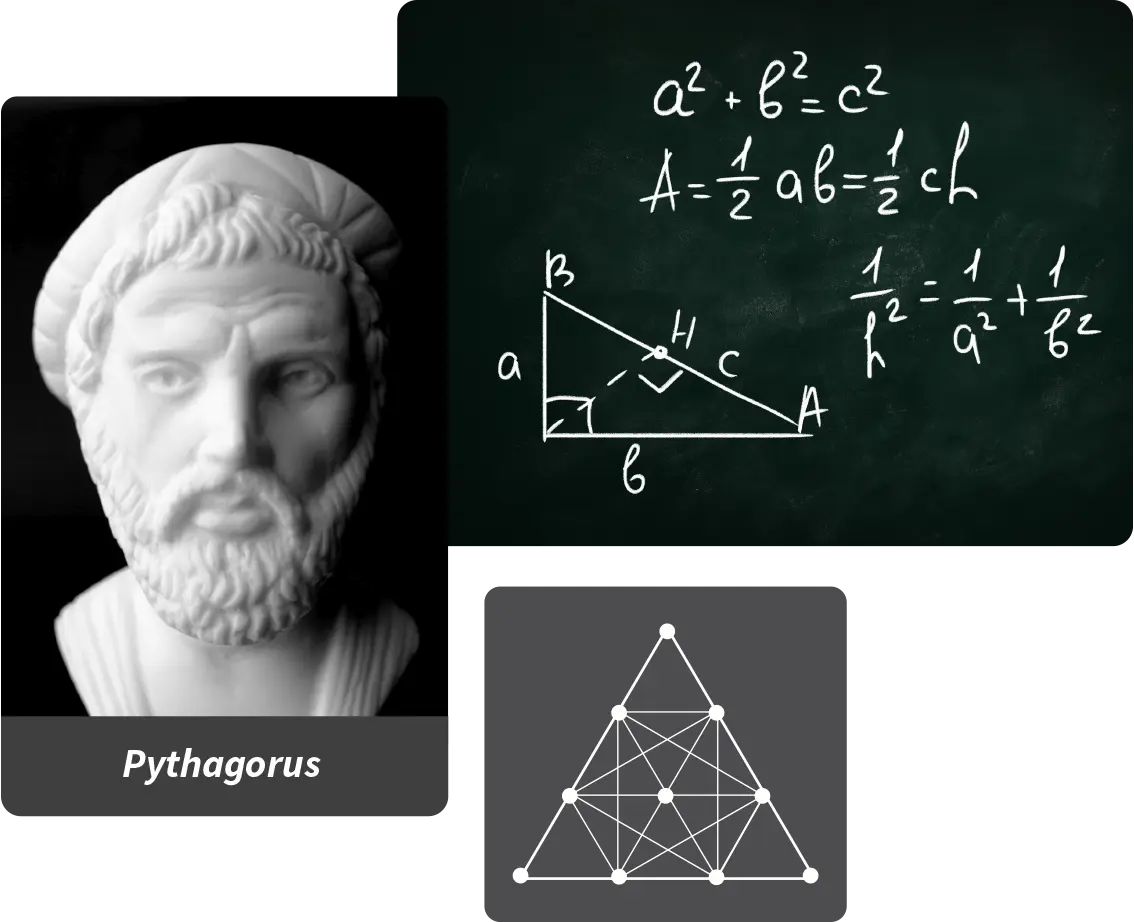
Fragments of the Enneagram symbol can be traced all the way back to classical Greece, where the mathematical patterns of three, seven and nine appear as significant elements in early epics, myths, philosophy and mathematical science - demonstrating the significance this sequence of numbers had in ancient works and thought.
Some authors even argue that variations of the Enneagram symbol can be found in the sacred geometry of Pythagorean mathematicians and mystical mathematics. Pythagoras claims his theory about numbers as the key to understand the creation of the cosmos were from his teachers in Egypt. Russ Hudson has lectured on the origins of the Enneagram about the Egyptian Ennead and how the metaphysical forces and numbers link to the origins of the Enneagram.
The founder of Neoplatonism, Plotinus (200 CE), speaks of nine divine qualities that manifest in human nature. His work would later greatly influence Western and Near-Eastern thought through subsequent thinkers such as St. Augustine of Hippo, the Cappadocian Fathers, St. Thomas Aquinas and Pseudo-Dionysius the Areopagite. Many of the early Vice and Virtues of the Greeks were standardized by the Christian monks into the seven deadly sins which became popular.

The earliest appearance of an Enneagram-like symbol is in the work of a Catalan philosopher and theologian Ramon Llull.
In his Ars Magna (1305), Llull supposed that there were a number of basic, undeniable truths in all fields of knowledge, and everything could be understood by studying combinations of these elemental truths. He created a diagram of nine sets of aspects in concentric circles, one of which maps to the Vices of the Enneagram.
Other schools and traditions in the same period also reflect early influential ideas including:

The more recent evolution and understanding of the Enneagram, in the form and shape that is known in the 21st century, is much clearer.
George Gurdjieff, an Armenian philosopher, Christian mystic and spiritual teacher, used the Enneagram and the three centers to describe the unfolding of creation - referring to it as a symbol of perpetual motion. Movements, or sacred dances, constitute an integral part of what Gurdjieff taught - with the philosopher often referring to himself as a "teacher of dancing".
He alludes to the fact that he was introduced to the Enneagram in the 1920s during a visit to a monastery in Afghanistan, but unfortunately never elaborated further on the symbol's origin.
During the course of the middle of the 20th century, The Enneagram began to gain a steadily growing influence through the work of a South American philosopher, Oscar Ichazo. Born in La Paz, Bolivia in 1931 , he demonstrated a deep interest in spiritual and philosophical pursuits from an extremely young age. In 1956, Ichazo founded a school called the Arica Institute where he presented lectures on his theories of Protoanalysis and ego-fixations. In protoanalysis, Ichazo described nine ways in which a person's ego becomes fixated within the psyche at an early stage of life - a model he referred to as the Enneagram of Fixations.
Although his arica school teachings were predominantly orientated towards spiritual growth, they were enormously important in connecting the Enneagram symbol to different personality types. His teachings provided a framework through which individuals could gain insight into the limiting beliefs caused by ego fixations and thereby work towards self- realization.
The influence and popularity that the Enneagram Personality types model enjoys today is largely due to the work of Chilean psychiatrist Claudio Naranjo. A successor of Frits Perls - the influential founder of Gestalt therapy - Naranjo is considered a pioneer in the integration of psychotherapy and the spiritual traditions and was instrumental in bringing the enneagram into the professional consulting arena. For a detailed account of the psychiatrists background and qualifications, read below. Individuals such as Ochs, Almaas and Maitri studied with Naranjo, who still teaches the Enneagram to this day. Through Robert Ochs, the Enneagram was introduced into numerous Christian communities in the United States where authors such as Jerry Wagner, Don Riso and Russ Hudson (Enneagram Institute) were exposed to the teachings of the modern Enneagram.
Since its introduction into the world of psychology, the Enneagram has been partially validated through experiential and empirical studies (for a summary see Sutton (2012) and cross-referenced with other constructs of psychology such as the MBTI test).
Enneagram teachers have also drawn on the work of psychologists outside of the Enneagram community to enhance our understanding and application of the framework. An example is the work of Karen Horney on psychological forms of defence which has led to Don Riso and Russ Hudson developing the fractal pattern of the Hornevians or social styles.
We acknowledge the rich contributions of all the Enneagram authors and practitioners that have contributed to the cumulative understanding and continue to inspire our application of the Enneagram.
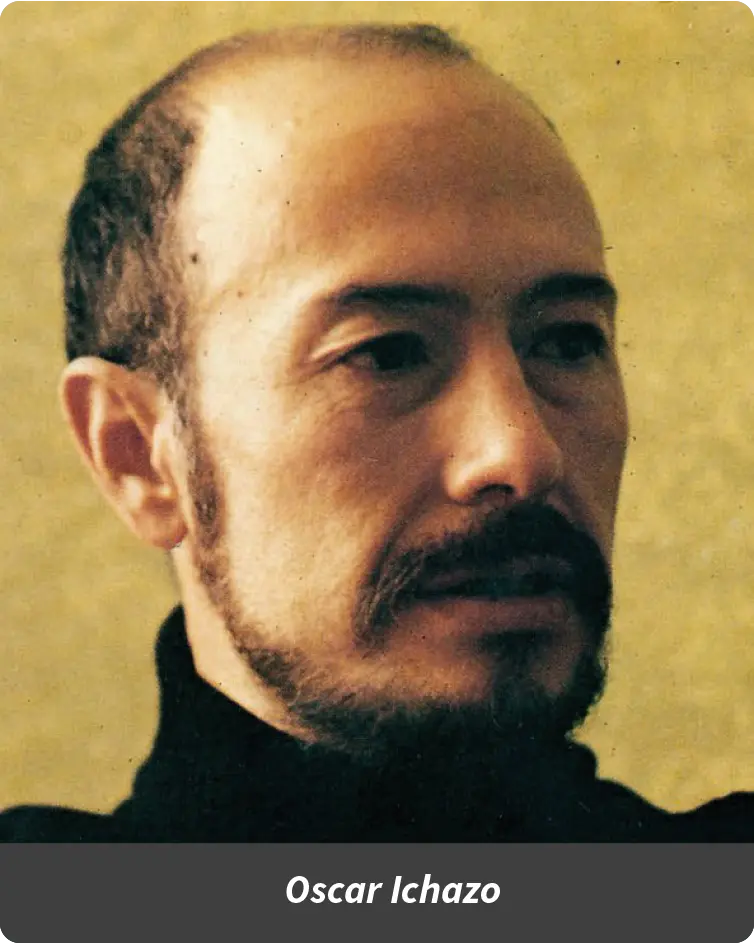
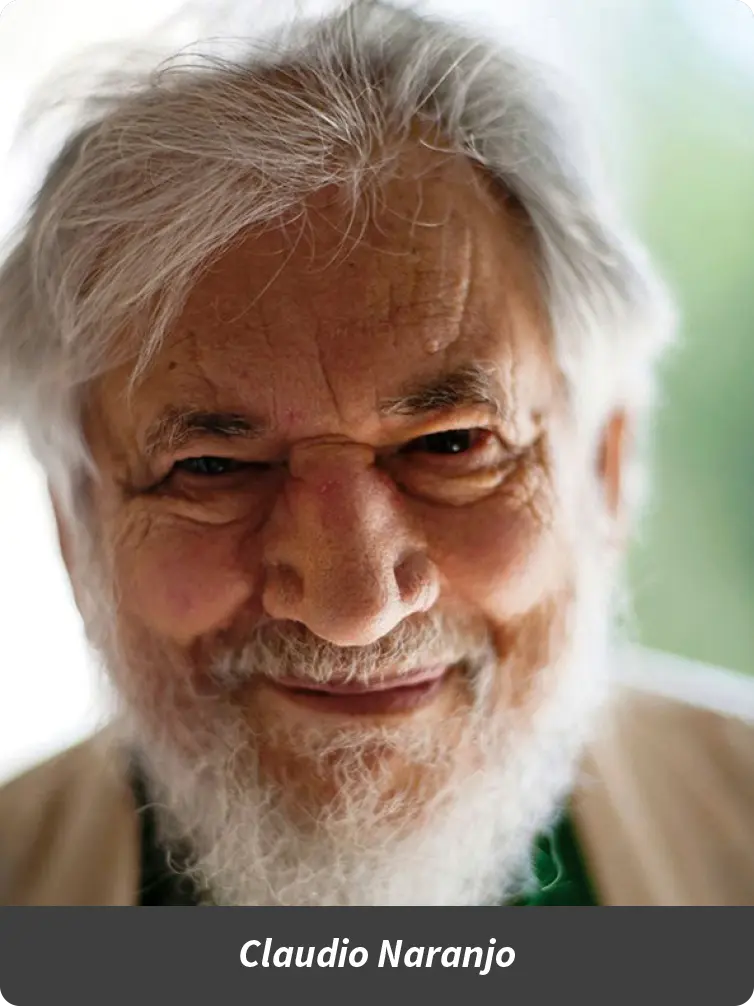
Some Christian critics have recently raised concern about the origins of the Enneagram of personality. This is simply the result of misinterpretation, however. During an interview with Claudio Naranjo, he stated that his process of creating the Enneagram involved using "enhanced states of consciousness" and "automatic writing" - techniques that some have tried to argue involve the "channelling of potentially demonic spirits".
Below I briefly outline the events that led up to Naranjo's creation of the nine Enneagram types and 27 subtypes, demonstrating that he was clearly an expert in the fields of psychology, psychometrics and personality. I hope to provide some clarity into exactly what was meant by the terms 'automatic writing' and 'enhanced states of consciousness' - with the aim of putting to ease any apprehension that some might have had over this brilliant man and his work.
Naranjo, in his public speeches, referred to Oscar Ichazo as the father of the Enneagram and himself as the mother. He further explained that he got the original seed ideas from Oscar and that he fleshed out the rest himself. Although George Gurdjieff introduced the Enneagram diagram (the lines of the triangle and the concept of the 142857 number sequence) to the public in 1923, it was Oscar that was the first to connect the nine vices, virtues, holy ideas and the 27 subtype keys to the Enneagram diagram - an idea that he saw in a similar diagram of Ramon Llull's Ars Magna (1305). It is not entirely clear what else Ichazo gave Naranjo, but the focus here will to follow the thread of the further developments made by Naranjo.
Let's take a quick dive into Naranjo's extensive background and qualifications in the field of psychology and psychiatry, meditation and mindfulness - as well as his knowledge of a wide array of teachings of different spiritual and philosophical traditions.
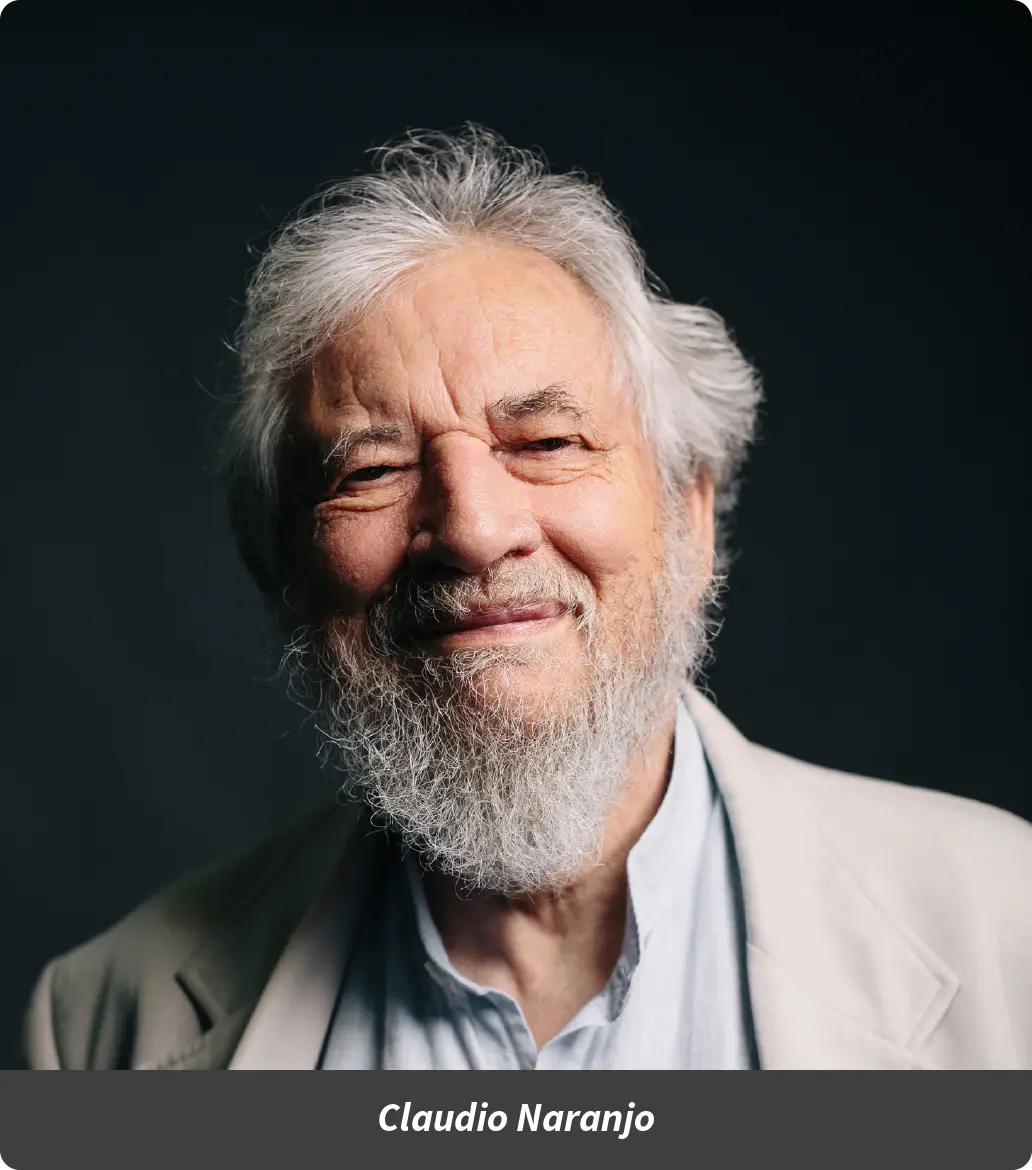

The Chilean born psychiatrist, Claudio Naranjo was a PhD qualified medical doctor, researcher, university lecturer and clinical psychiatrist who had been involved in scientific research and teaching at several universities in South America and the United States.
He collaborated with several notable figures in the field of psychology and psychiatry, including Raymond Cattell - a pioneer in psychometric assessments and trait factor analysis , and Gordon Allport - one of the first psychologists to focus on the study of personality.
In 1963, Naranjo was invited to Berkeley, California, for a year and a half to participate in the activities of the Institute of Personality Assessment and Research. He was also an apprentice of Fritz Perls and was part of the formation of Gestalt Therapy (especially the innovation of using it in very large groups). Naranjo was a key figure at Esalen, receiving additional training and supervision from Jim Simkin in Los Angeles and attending sensory awareness workshops with Charlotte Selver. He became a close friend of Carlos Castaneda and was part of Leo Zeff's pioneering psychedelic therapy group in 1965-66.
Naranjo also studied with Bogumił Jasinowski, a professor at Santiago, who taught and specialized in cultural history - particularly Neoplatonism and Pythagoreanism. Trained in Freudian psychology, Naranjo was a specialist at using Free Association and Active imagination with his patients and even himself. He followed the work of Karen Horney, researched psychoactive chemicals in clinical trials and published dozens of peer reviewed academic articles. He was instrumental in synthesizing MDMA and a pioneer of its use in psychotherapy.
He trained with Bob Hoffman - and actually improved on the Hoffman technique to scale it to large groups. He already knew and was trained in Gurdjieff's Fourth Way school and was friends with many of Gurdjieff's students. Naranjo studied with Paul Tillich - known for his unique integration of essentialism and existentialism as well as his sustained engagement with ontology in the Systematic Theology. In 1969, he published a 120-page thesis on self-awareness and the development of consciousness levels and growth. He claimed that he synthesized and studied 150 methods at the Stanford Research Institute into this work.
With this extensive background and enormous collection of qualifications, it's no wonder that Naranjo was capable of creating something as ground-breaking as the Enneagram of Personality.
Naranjo developed the Enneagram of Personality in the early 1970s. He called the process of creating the Enneagram "automatic writing," which refers to the use of relaxed and enhanced states of consciousness to interlink concepts in his mind and subconsciousness to create a meta-structure of personality traits.

The first International Enneagram Conference, initiated by Helen Palmer held at Stanford University in 1994, marked a pivotal moment in the recognition of the Enneagram as an accepted and reliable personality system.
Psychologists, spiritual teachers, coaches, and business professionals from around the world came together to share research and exchange ideas on the enneagram system. David Daniels developed the stanford enneagram discovery inventory as an early form of self-typing based on nine paragraphs of descriptions.
The event inspired a group of early Enneagram teachers to found the International Enneagram Association. These Founders included Maria Beesing, David Daniels, Theodorre Donson, Andreas Ebert, Russ Hudson, Jerry Wagner, Kathy Hurley, Patrick O'Leary, Helen Palmer, and Don Riso.
We also acknowledge contemporary theorists and developers of the field: Mark Bodnarczuk, Sandra Maitri, AH Almaas (Holy Ideas), Beatrice Chestnut, Uranio Paes, Ginger Lapid-Bogda, Katherine Fauvre, Mario Sikora, Ian Morgan Cron, and many more.

The Integrative Enneagram Questionnaire is a dynamically adaptive intelligent assessment. It will take you about 30 minutes to complete and it will measure: Enneagram Profile, 27 Subtypes, Centers, Wings, Lines, Levels of Integration and 6 dimensions of Strain.
Get Your Type